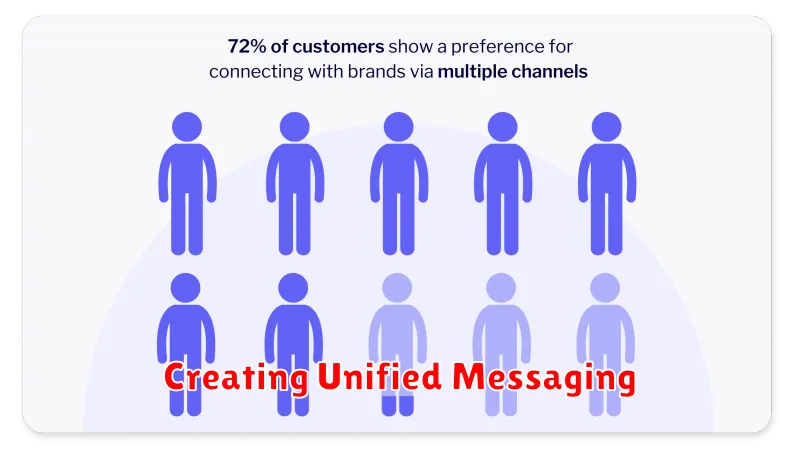In today’s fragmented media landscape, reaching your target audience effectively requires a strategic approach. Cross-channel marketing offers a solution by coordinating your marketing efforts across multiple channels, creating a cohesive and engaging customer journey. This article will delve into the essential steps for building and executing successful cross-channel marketing campaigns that drive measurable results. Learn how to leverage the power of integrated marketing to enhance brand visibility, boost customer engagement, and ultimately, increase conversions. From understanding your audience to selecting the right channels and measuring campaign performance, this guide will provide actionable insights to help you master cross-channel marketing.
Cross-channel marketing campaigns go beyond simply promoting your message on different platforms. They involve strategically aligning your messaging and targeting to deliver a unified and personalized experience to each customer. This approach fosters stronger customer relationships and maximizes the impact of your marketing investments. Discover how to seamlessly integrate email marketing, social media, paid advertising, content marketing, and other channels to create cross-channel marketing campaigns that resonate with your audience and drive business growth. This article will provide a comprehensive framework for planning, executing, and optimizing your campaigns for optimal performance.
What is Cross-Channel Marketing?
Cross-channel marketing is a multi-channel marketing strategy that aims to provide a seamless and integrated customer experience across all the channels a customer interacts with a business.
Instead of treating each channel (e.g., email, social media, website, physical store) as a separate entity, cross-channel marketing orchestrates them to work together, creating a unified brand experience.
A simple example would be a customer browsing products on a company website, adding items to their cart, but not completing the purchase. Later, they receive a personalized email reminding them about their abandoned cart, perhaps with a special offer. This email then seamlessly directs them back to their cart to finish the purchase. This coordinated effort across two channels (website and email) exemplifies a cross-channel approach.
The key objective of cross-channel marketing is to improve customer engagement, increase conversions, and foster stronger customer relationships through consistent and personalized interactions.
Identifying the Right Channels
A crucial step in cross-channel marketing is identifying the right channels to reach your target audience. Understanding your customer demographics and behavior is paramount. Where do they spend their time online and offline? Which platforms do they engage with most? Answering these questions will guide your channel selection.
Consider the strengths and weaknesses of each channel. Social media platforms excel at building brand awareness and engagement. Email marketing is effective for personalized communication and driving conversions. Paid advertising offers targeted reach and measurable results. Direct mail can be impactful for specific demographics.
Don’t feel obligated to be on every channel. Focus on the channels that align with your target audience and marketing objectives. Start with a few key channels and expand as needed based on performance and data analysis.
Creating Unified Messaging

A crucial aspect of cross-channel marketing is crafting unified messaging. This means ensuring your brand’s voice, tone, and core message remain consistent across all channels you utilize. Whether a customer interacts with your brand on social media, email, your website, or through direct mail, they should receive a cohesive and integrated brand experience.
Key considerations for creating unified messaging include defining your target audience and understanding their preferences on each platform. Tailor your language and content accordingly, while still maintaining the core elements of your brand identity. This tailored approach helps build brand recognition and fosters trust with your audience.
Consistent visuals are also vital for creating a unified message. Use the same logo, color palette, and font style across all channels to reinforce brand identity. This visual consistency further strengthens brand recognition and contributes to a seamless customer experience.
Syncing Timelines and Content

A crucial aspect of successful cross-channel marketing is the synchronization of timelines and content across all chosen channels. This creates a unified and cohesive brand experience for your audience.
Timeline synchronization ensures that your message is delivered at the optimal time on each platform, maximizing reach and impact. For example, a social media teaser could precede an email campaign announcing a new product launch.
Content synchronization involves adapting your core message to suit the specific nuances of each channel while maintaining a consistent brand voice and aesthetic. A long-form blog post could be repurposed into shorter snippets for social media, or a video tutorial could be summarized in an infographic for email marketing.
A clear content calendar is an invaluable tool for managing these synchronized efforts. It allows you to visualize your campaign timeline across all channels and ensure consistent messaging.
Tracking Campaign Success
Tracking the success of your cross-channel marketing campaign is crucial for understanding its effectiveness and making data-driven decisions. Key Performance Indicators (KPIs) offer quantifiable metrics to measure progress towards your campaign goals.
Choosing the right KPIs depends on your specific objectives. If your goal is to increase brand awareness, you might track metrics like reach, impressions, and social media engagement. If your goal is to drive conversions, you might track website traffic, leads generated, and sales.
Utilize analytics platforms associated with each channel. This might include website analytics, social media analytics dashboards, email marketing platforms, and CRM systems. Consolidate this data to gain a holistic view of your campaign performance across all channels.
Regularly monitor your KPIs. Don’t wait until the end of the campaign to analyze the data. Consistent monitoring allows you to identify trends, spot potential issues, and make necessary adjustments to optimize your campaign in real-time.

